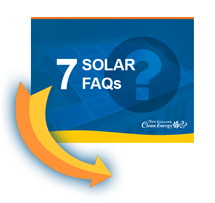SMART Highlights
The Solar Massachusetts Renewable Target (SMART) program, which pays homeowners and businesses in Massachusetts to generate solar energy, is finally here with the official start date of November 26, 2018. If you haven’t yet gone solar the time to sign up is now.
And the SMART program is aptly named. The three best things about it are:
- It Provides Guaranteed Money
- Payments Come In Every Month
- It’s Easy
The Basics
Like the programs that came before – the Commonwealth Solar rebate and SREC programs – the SMART program was designed to encourage the installation of more solar. The state’s goal for SMART is 1,600 megawatts of additional solar on top of the 2,200 MW we already have. And as noted above, the SMART program is easier to understand and easier to participate in than the programs that came before it. In fact, the only real downside is that the longer you wait the lower your benefits will be.
The Details on Why You’ll Like SMART
Installers and customers loved SRECs of course, but SMART is really, really good too. The rates not only ended up better than I expected, but the details show that the experts in Boston learned from the programs that came before.
- It Provides Guaranteed Money: Unlike SRECs which are traded in a market and thus have fluctuating payment rates, the SMART program fixes your payments right at the start. So once you are in the program you’ll know exactly what benefit you will receive for the entire 10 year term (or 20 for larger commercial systems). The potential of a market value going up is nice, but unfortunately a market also means it can also go down. So SMART gives you the certainty that many people and businesses crave.
- Payments Come Every Month: You could only sell your SRECs every three months and it typically took at least six months before you could get your first check. Conversely, your SMART payments will be monthly, in the form of a check from your utility and along with your monthly electricity bill. No big wait as well as no up and down value.
- It’s Easy: And last but perhaps most important, the program is administered by your utility company, which (all kidding about utility companies aside) means there will be a lot less finger pointing and passing the buck for the administration of the program. That’s because the utility will now be responsible for monitoring your solar production and making all the payments. For example, there is no middleman selling your SRECs. You really don’t have to do a thing (although you’ll still have your own system reporting so you can check up on that company you don’t always like).
What SMART Pays
While what you get is known and fixed once you’re in the program, there is no short answer to what you’ll get until you sign up. That’s because the payment rate varies by utility, system size, type of solar installation, and most importantly timing. You can see some of the complexity behind it on this page of the state SMART website, but you can also make it easy on yourself and call us. We’ll do the calculation for you!
To give you some idea though, I gave a few examples in this earlier post, SMART Solar Samples. My calculations suggest that 10 years of SMART income will range between $7,400 and $13,800 for a typical system. A very nice contribution to the cost of any new system.
As noted in regard to timing however, it’s particularly important to know that SMART is organized into “declining blocks” and the SMART payment is lowered for new subscribers by 4% with each block (it does not change once you are in the program). And because of the way the actual payment is calculated, that 4% decline actually works out to be closer to 9 to 10% of the actual cash you’ll receive. But to keep it simple, just remember that the sooner you get in, the more money you’ll get.
SMART’s Impact on Solar System Price
In all, the SMART incentive should pay you about 30-40% of the price of your solar energy system. When you add that to the still available 30% federal and $1,000 state tax credits as well as the 25 to 30 years of electricity production your system will not only pay for itself rather quickly, it will typically double or in some cases even triple the money you’ll invest up front. As I’ve long noted, that’s a whole lot better than your typical home improvement (and many business improvements as well!).
Eligibility
The one downside to SMART is that it is only open to customers of the three major Investor owned utilities in the state: National Grid, Eversource and Unitil. Sadly, customers of municipal light departments are not currently eligible. That said, many municipal utility customers are still finding solar to be an excellent investment. Making power for yourself is still a great choice and we can help you figure out if it’s the right thing for you to do.
If you liked this article, you might also enjoy:
- SMART Solar Samples
- How to Get the 30% Federal Solar Tax Credit
- Solar is Not a One Size Fits All Product




 Download our 7 FAQs
Download our 7 FAQs

